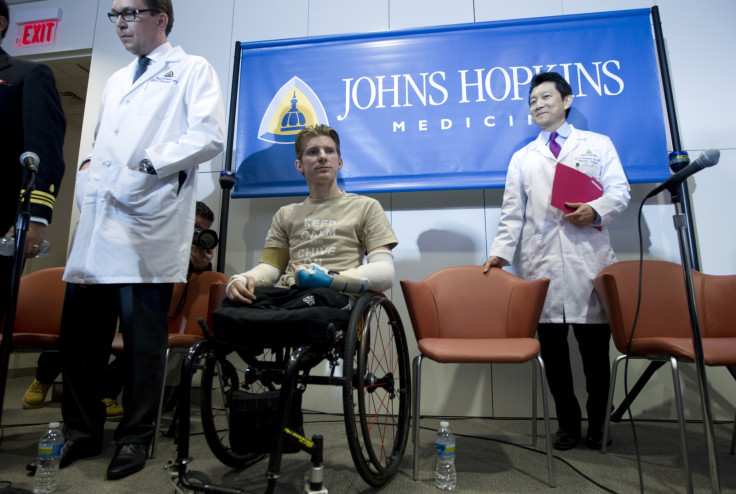US scientists plan to grow new limbs for amputees from stem cells

Austrian surgeon Harald Ott is working with a team at Massachusetts General Hospital to create a "biolimb" to attach to a monkey, after successfully growing a limb for a rat. They believe that if their primate experiment proves successful, they will be able to adapt the process to grow artificial replacement limbs for humans.
This could mean that amputees who receive replacement limbs would no longer need to take immuno-suppressive drugs, which leads them more vulnerable to other diseases, for the rest of their lives.
How a new limb is created in the lab
Scientists use a powerful detergent to strip down the limb as far as its individual cells, getting rid of soft tissues and killing donor cells, which leaves a collagen-structure 'scaffold' of blood vessels, muscles, tendons and bones, a process known as decellularisation.
Cells from another being are then grown on the the 'scaffold' in a bioreactor – a container that supplies oxygen, nutrients and electrical stimulation to the limb.
The Ott Laboratory for Organ Engineering and Regeneration in Boston has already grown cells to help create human organs, and researchers there firmly believe they are on track to being able to do the same for limbs.
The rat arm was the first artificial biological limb – or 'biolimb' – ever created. After weeks of development, the arm was capable of producing blood cells and its muscles contracted when electrically stimulated.
Some Challenges
Ultimately, the limbs are restored into a fully functional form, containing the blood, bones, muscles, cartilage of the human or animal providing the stem cells. But the jump from growing a rodent's limb to a primate's is proving far more complicated.
"There is a lot more that primate limbs can do… opposable thumbs, for one thing," said Dr Daniel Weiss, who works on lung regeneration at the University of Vermont College of Medicine.
The introduction of functioning nerves also presents challenges. "You have to have cells that should turn into blood vessel cells go to where they should go. You don't want them in the spot where the nerve cells should go," Weiss tells The Times.
'A good start'
Maximina Yun, regenerative biology researcher at University College London, says the efforts to grow a primate limb are a good start, but that the scientists lacked a detailed study to outline whether this could be practical for humans.
Her work on limb regeneration focuses on salamanders – the only animal capable of regrowing limbs after being amputated – but Yun hopes to apply this knowledge to humans. She stresses that there are many challenges faced with growing limbs for humans, including growing nerves in muscles, maintaining their limb's range of movement, and preventing tissue rejection in the person who receives the new limb.
"We need a limb that doesn't pose any risk to humans," she told CNN.
© Copyright IBTimes 2025. All rights reserved.





















